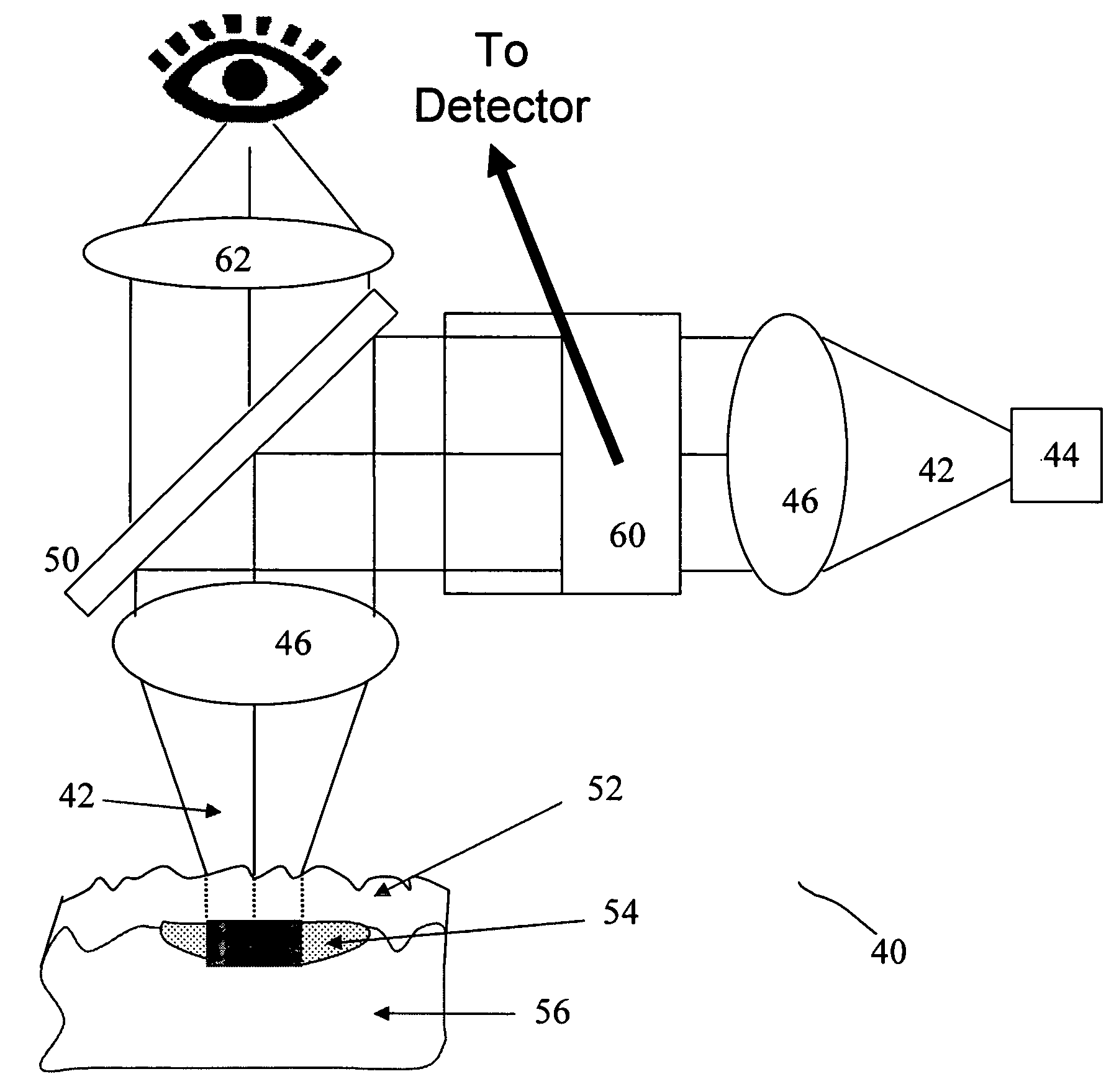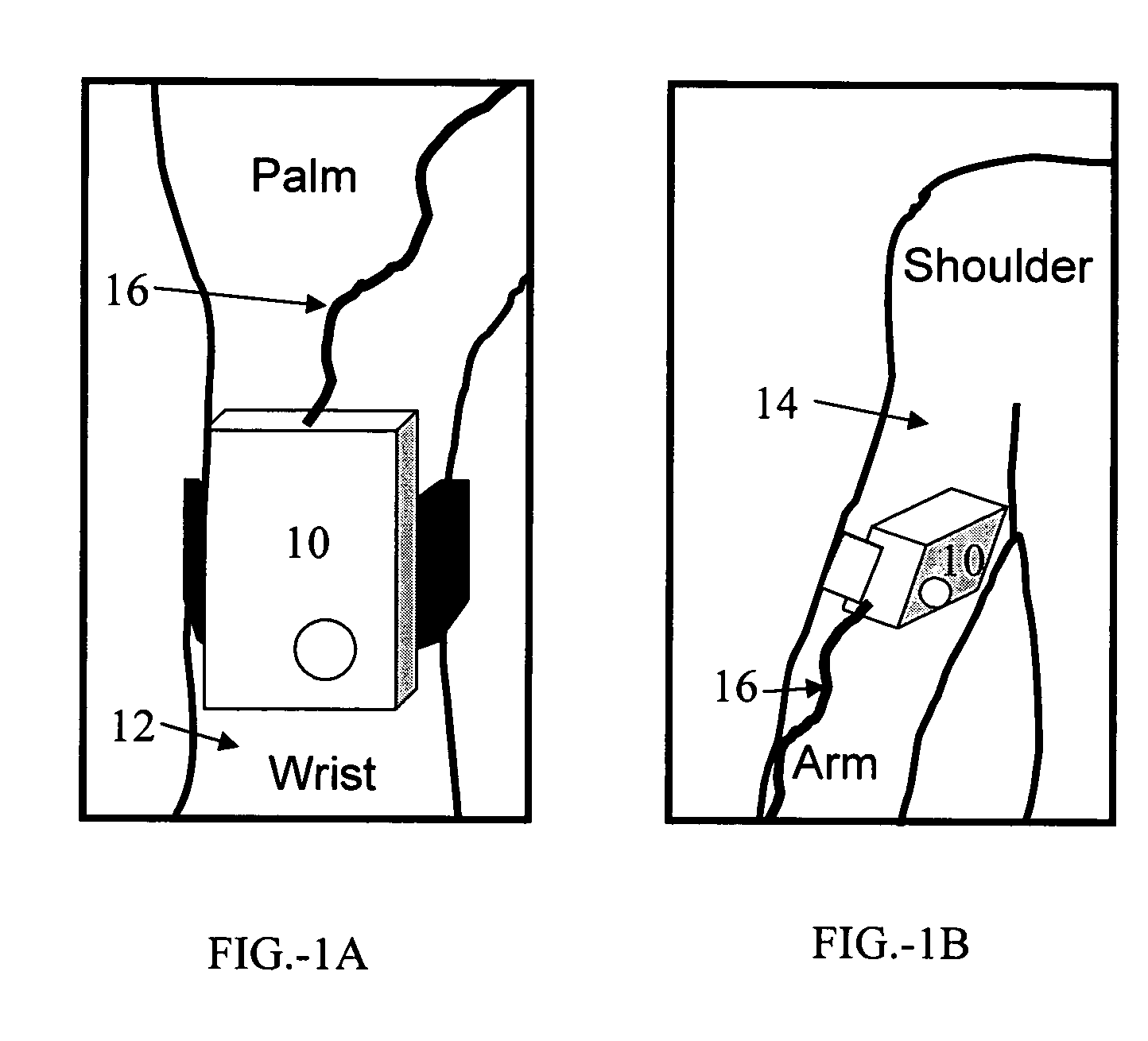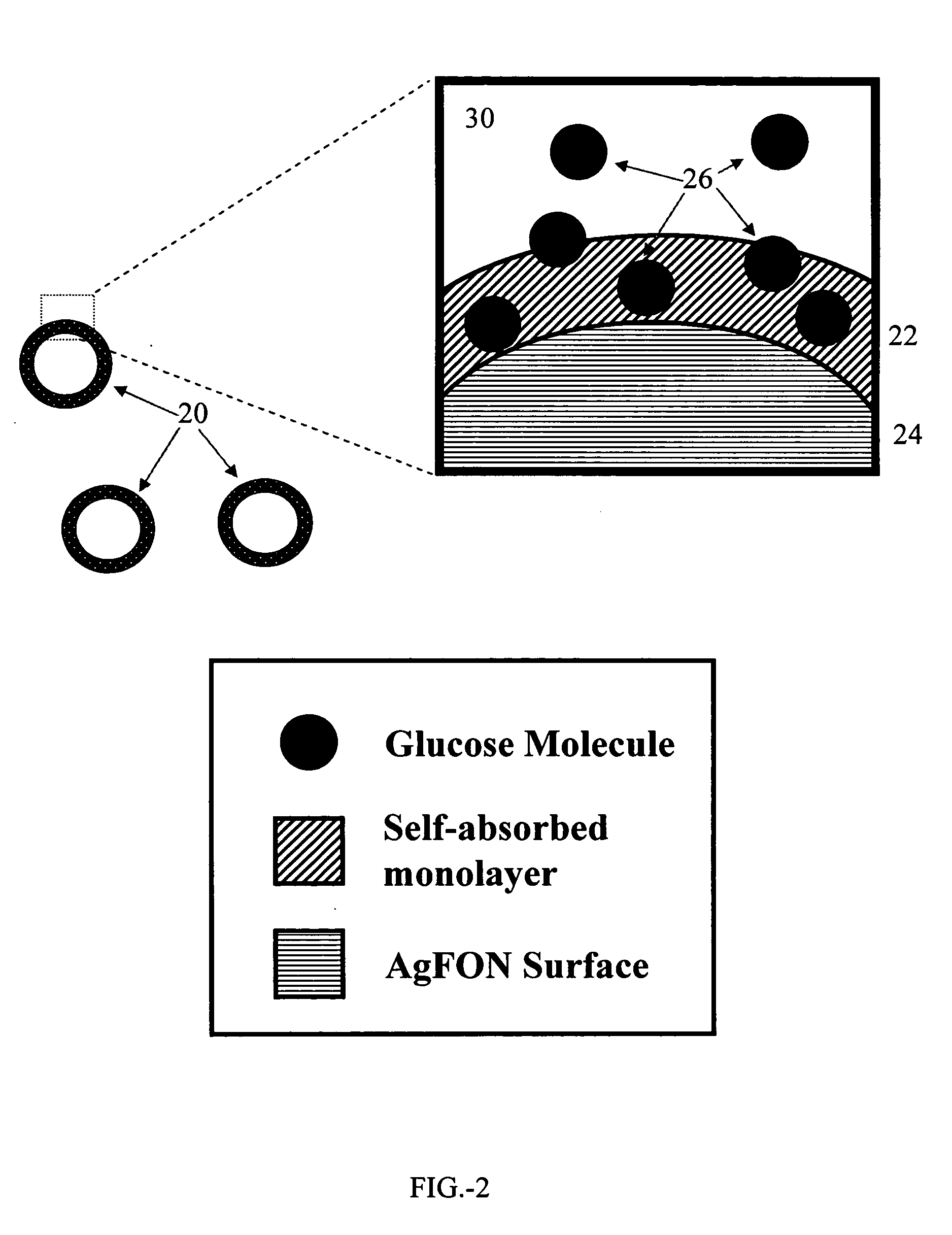Optical in vivo analyte probe using embedded intradermal particles
an in vivo analyte and probe technology, applied in the field of in vivo detection and/or quantification of analytes, can solve the problems of historic difficulty of sers detection of glucose in vivo using prior art methods, less appropriate uv resonance enhanced raman for in vivo detection applications,
- Summary
- Abstract
- Description
- Claims
- Application Information
AI Technical Summary
Benefits of technology
Problems solved by technology
Method used
Image
Examples
Embodiment Construction
1. Selective Enhanced Glucose Detection
Detection of glucose (or other analytes) using SERS presents two potential problems. Silver nano-particles (or other sensitized small particles) must be implanted in the human body to effectively make contact with glucose, and the nano-particles must be sensitized to glucose, which generally does not readily adhere to silver surfaces. The present invention solves the first problem by applying well-known tattooing techniques for implantation of sensitized particles.
Referring to FIG.1A and FIG.1B, a monitor 10 according to the present invention may advantageously be worn on the inner wrist 12 as shown in FIG.1A, on the inner upper arm 14 as shown in FIG.1B, or, alternatively, on some other portion of the body where close and consistent skin contact may be maintained. For the examples shown in FIG.1A and FIG.1B, contact is made to skin on the inner part of the wrist or arm, respectively. A fiber cable 16 connects the monitor unit to a laser s...
PUM
 Login to View More
Login to View More Abstract
Description
Claims
Application Information
 Login to View More
Login to View More - R&D
- Intellectual Property
- Life Sciences
- Materials
- Tech Scout
- Unparalleled Data Quality
- Higher Quality Content
- 60% Fewer Hallucinations
Browse by: Latest US Patents, China's latest patents, Technical Efficacy Thesaurus, Application Domain, Technology Topic, Popular Technical Reports.
© 2025 PatSnap. All rights reserved.Legal|Privacy policy|Modern Slavery Act Transparency Statement|Sitemap|About US| Contact US: help@patsnap.com



